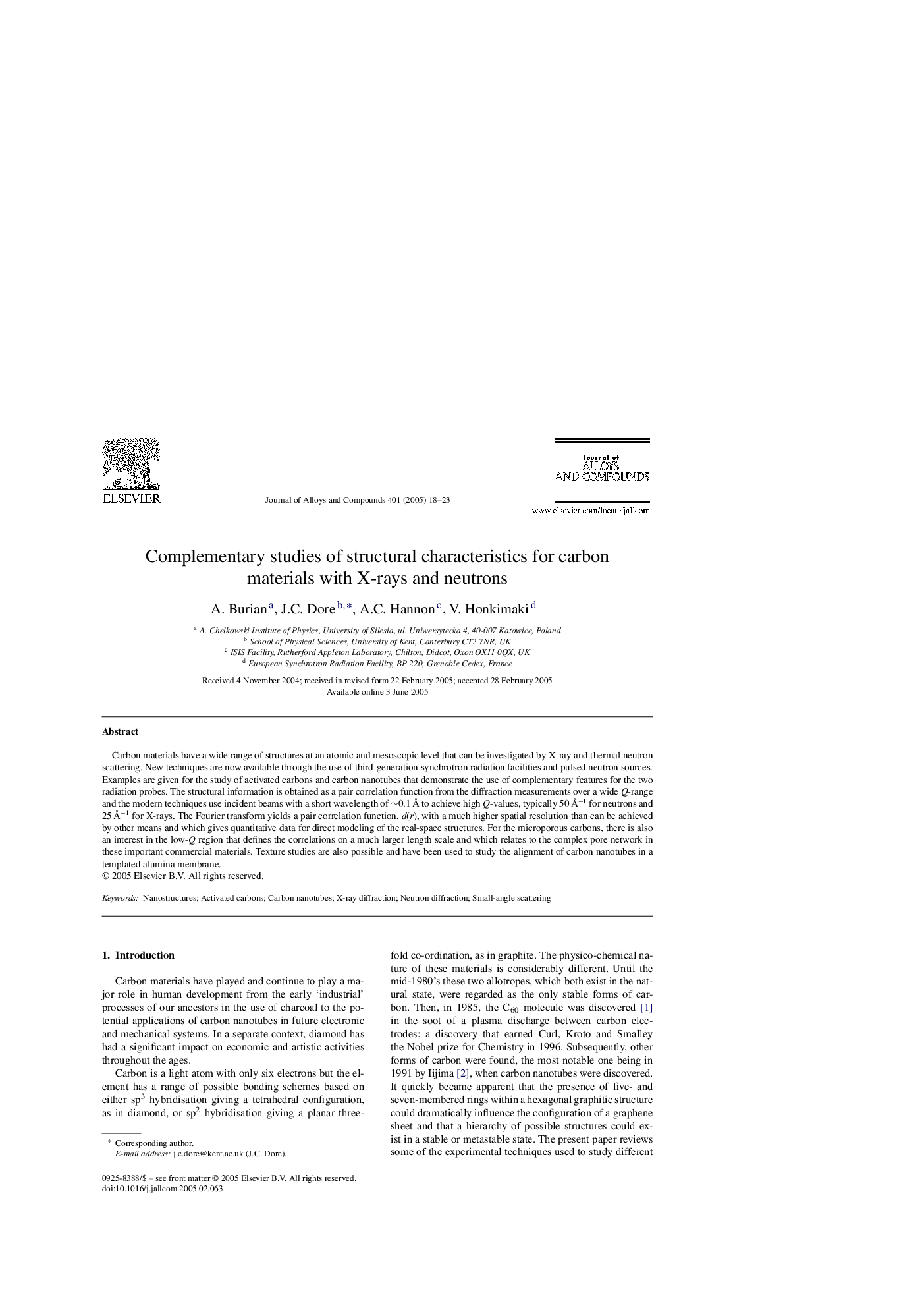| Article ID | Journal | Published Year | Pages | File Type |
|---|---|---|---|---|
| 9803370 | Journal of Alloys and Compounds | 2005 | 6 Pages |
Abstract
Carbon materials have a wide range of structures at an atomic and mesoscopic level that can be investigated by X-ray and thermal neutron scattering. New techniques are now available through the use of third-generation synchrotron radiation facilities and pulsed neutron sources. Examples are given for the study of activated carbons and carbon nanotubes that demonstrate the use of complementary features for the two radiation probes. The structural information is obtained as a pair correlation function from the diffraction measurements over a wide Q-range and the modern techniques use incident beams with a short wavelength of â¼0.1Â Ã
to achieve high Q-values, typically 50Â Ã
â1 for neutrons and 25Â Ã
â1 for X-rays. The Fourier transform yields a pair correlation function, d(r), with a much higher spatial resolution than can be achieved by other means and which gives quantitative data for direct modeling of the real-space structures. For the microporous carbons, there is also an interest in the low-Q region that defines the correlations on a much larger length scale and which relates to the complex pore network in these important commercial materials. Texture studies are also possible and have been used to study the alignment of carbon nanotubes in a templated alumina membrane.
Keywords
Related Topics
Physical Sciences and Engineering
Materials Science
Metals and Alloys
Authors
A. Burian, J.C. Dore, A.C. Hannon, V. Honkimaki,
